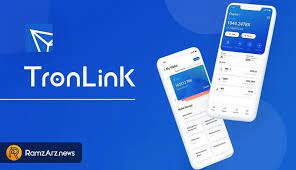TronLink is a browser extension and mobile wallet that serves as a vital bridge between users and the TRON blockchain ecosystem. Developed by the Tron Foundation, Tronlink provides an easy-to-use interface for accessing TRON’s decentralized applications (dApps), managing TRON-based assets, and interacting with smart contracts. With its simple design and powerful functionality, TronLink has become a popular tool for those looking to engage with TRON’s decentralized network. Here’s a deeper dive into what TronLink offers and why it’s becoming an essential tool in the cryptocurrency space.
What Is TronLink?
At its core, TronLink is a cryptocurrency wallet and gateway to TRON’s decentralized ecosystem. It functions much like other popular crypto wallets but is specifically designed for users of the TRON blockchain, a network known for its scalability, low transaction fees, and fast transaction speeds. TronLink works as a browser extension, similar to MetaMask for Ethereum, and is also available as a mobile app for both Android and iOS devices.
The wallet allows users to store, send, and receive TRON (TRX), as well as any TRC-10 or TRC-20 tokens (the two primary token standards on the TRON blockchain). Additionally, TronLink enables seamless interaction with dApps and decentralized exchanges (DEXs) built on TRON.
Key Features of TronLink
1. User-Friendly Interface
One of TronLink’s biggest advantages is its simplicity. Whether you’re a seasoned crypto enthusiast or a beginner, the wallet is designed to be intuitive. The browser extension provides a quick setup process, allowing users to create a wallet in just a few steps. The mobile version mirrors this ease of use, making it convenient for users on the go.
2. Comprehensive Token Support
TronLink supports a wide range of tokens built on the TRON blockchain, including TRX, TRC-10, and TRC-20 tokens. The wallet’s built-in token management system makes it easy for users to track their balances and switch between different tokens seamlessly.
3. Interacting with dApps
One of the most attractive features of TronLink is its seamless integration with TRON-based decentralized applications (dApps). Users can easily access a wide variety of dApps, from gaming and finance to social media platforms and decentralized exchanges (DEXs). TronLink’s dApp browser allows users to explore the TRON ecosystem with a few clicks.
4. Staking and Earning Rewards
TronLink also allows users to stake their TRX tokens and earn rewards in the process. By participating in the staking process, users help secure the network while generating passive income. Staking on TRON is typically straightforward, with rewards distributed regularly based on the user’s stake.
5. Smart Contract Interactions
For developers and more advanced users, TronLink provides full access to smart contracts on the TRON blockchain. Users can interact with decentralized finance (DeFi) protocols, token exchanges, and other smart contract-based applications.
6. Security and Privacy
Security is a critical concern when dealing with cryptocurrencies, and TronLink addresses this by offering private key management. The wallet is non-custodial, meaning users maintain full control over their keys. Additionally, TronLink allows for the use of hardware wallets, adding an extra layer of protection for users holding large amounts of cryptocurrency.
7. Cross-Platform Compatibility
TronLink is available as both a browser extension (for Chrome, Brave, and Firefox) and as a mobile app for iOS and Android, making it accessible across a wide range of devices. This cross-platform compatibility ensures that users can access their TRON wallet and manage their assets anytime, anywhere.
TronLink vs. Other Cryptocurrency Wallets
TronLink’s closest competitors are wallets that focus on the TRON blockchain and decentralized applications, such as TronPay and TronWallet. However, TronLink stands out in several key areas:
- Comprehensive Ecosystem Integration: While other wallets may support a limited number of TRON-based tokens or dApps, TronLink is highly integrated with the entire TRON ecosystem. This makes it a one-stop solution for users wanting to access a wide range of features and services.
- Security and Flexibility: TronLink’s security protocols, combined with the option to connect to hardware wallets, make it one of the more secure choices for storing TRON-based assets. Furthermore, its ability to interact with TRON’s DeFi platforms and smart contracts is robust, offering an edge for users looking for a wallet that can handle more than just simple transactions.
- Community and Developer Support: The Tron Foundation has built a thriving ecosystem of developers and users, and TronLink plays a pivotal role in this. As a wallet that supports both casual users and advanced developers, TronLink is continuously evolving to meet the needs of the growing TRON community.
The Future of TronLink
With the TRON blockchain continuing to grow and evolve, TronLink is poised to be an even more integral part of the ecosystem. As the world moves toward Web 3.0 and decentralized finance (DeFi), TronLink will likely continue to innovate, bringing new features and improvements that further integrate TRON’s technology into the broader digital economy.
In the near future, TronLink may expand its support for other blockchains, explore NFTs (non-fungible tokens), and offer even more advanced staking and liquidity provision options. As the TRON ecosystem matures, TronLink will remain at the forefront of blockchain wallet technology, enabling users to interact with decentralized applications and services more efficiently.
Conclusion
TronLink offers users an easy-to-use, secure, and feature-rich way to interact with the TRON blockchain and its ecosystem. Whether you’re looking to manage your TRON assets, stake tokens, or dive into the world of decentralized applications, TronLink provides all the tools necessary to do so. As the TRON blockchain continues to evolve, TronLink will remain a key player in bringing TRON’s powerful capabilities to users around the world, helping drive the adoption of decentralized technologies.

